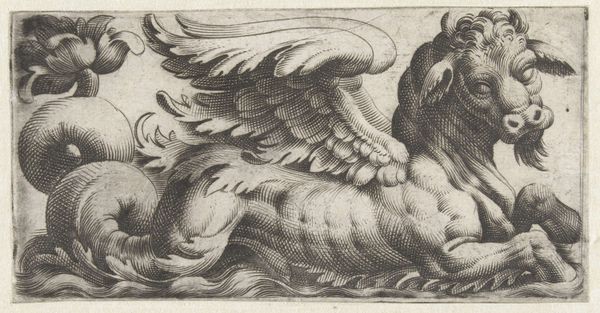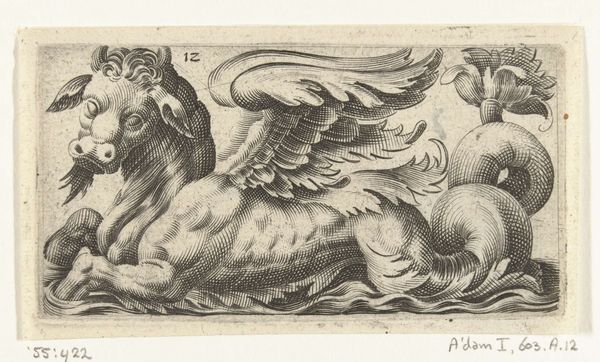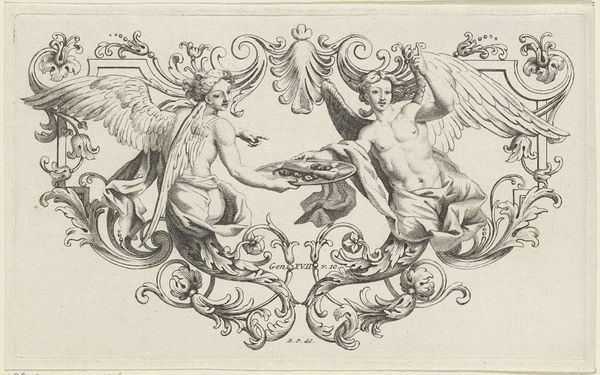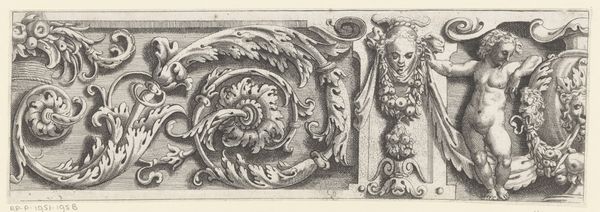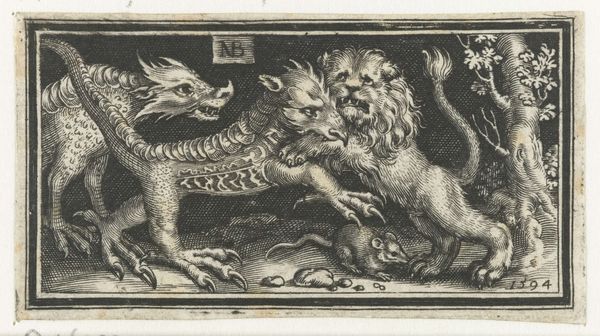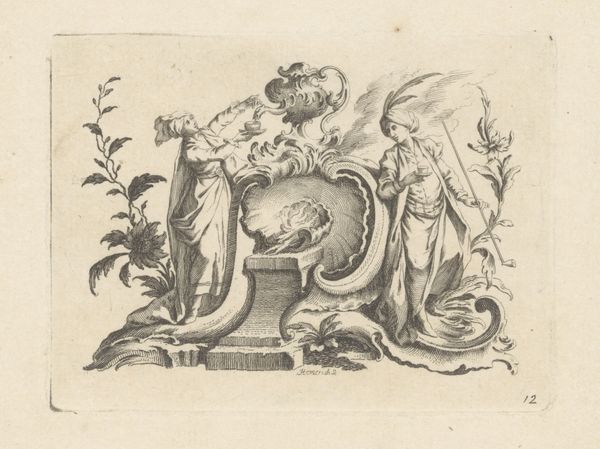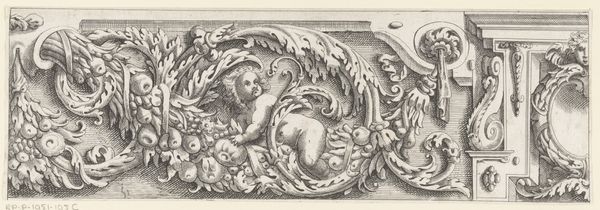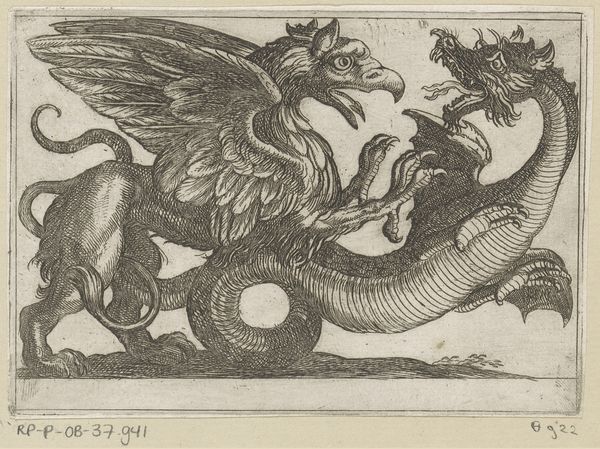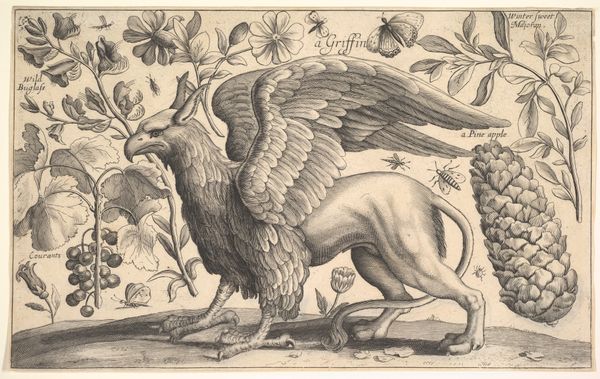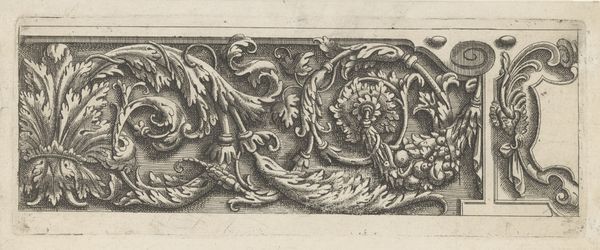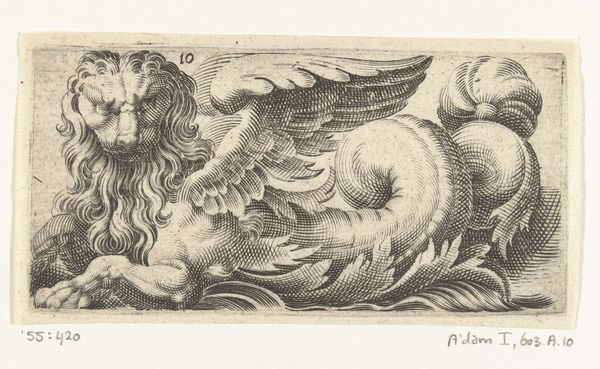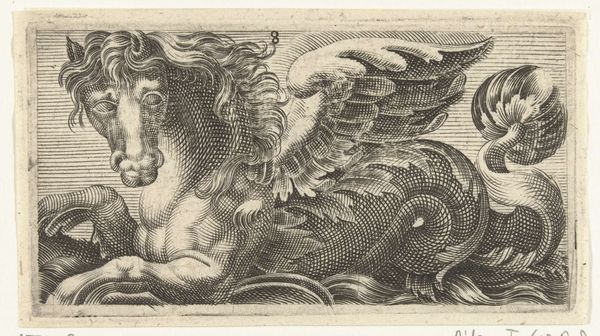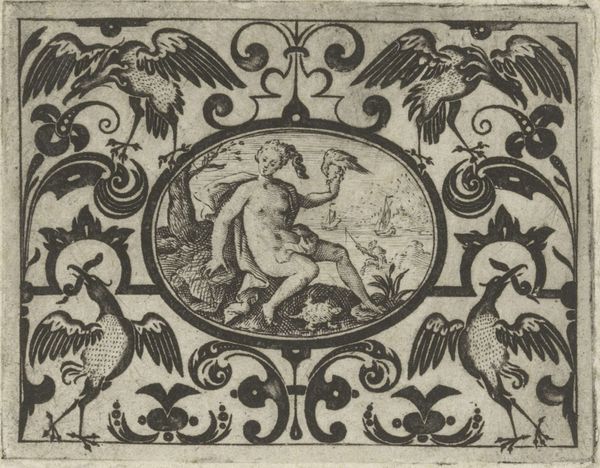
Deel van fries op schouw in Vroedschapskamer van het Stadhuis op de Dam 1663
0:00
0:00
drawing, print, relief, engraving
#
drawing
#
baroque
#
pen drawing
# print
#
pen sketch
#
dog
#
relief
#
figuration
#
ink drawing experimentation
#
pen work
#
history-painting
#
engraving
Dimensions: height 112 mm, width 396 mm
Copyright: Rijks Museum: Open Domain
Curator: This drawing, dated 1663, captures a section of the Friese panel in the Vroedschapskamer, part of the old Town Hall in Amsterdam, created by Hubert Quellinus. It gives us an important glimpse into the building's decorative program. Editor: What strikes me is its delicate execution, even in reproduction, with tightly controlled pen lines describing an amazing sense of volume and texture across this imagined relief. Curator: Absolutely. Notice how Quellinus incorporates established symbolic vocabularies of Baroque art. Take, for instance, the sphinx – an ancient symbol of wisdom, guardianship, and riddle-solving, alluding to the virtues expected in the city’s administrators. Editor: Yes, and next to her a Cerberus-like beast, but a trinity of dog heads—unusual! The bestiary here points to a keen interest in classical form but rendered with dynamic line work to imply sculptural details. Note how his use of hatching implies rounded, projecting forms along the architectural panel. Curator: True. The three-headed dog is rather unexpected; still, these symbols function to provide visual cues regarding the values upheld within those hallowed halls. Even the cupid at the far left alludes to love and good-doing as essential civic virtues. Editor: Quellinus cleverly integrates multiple classical styles—the lion masks are positively Corinthian. Each creature feels almost alive, brimming with vitality and purpose. I see classical forms imbued with theatrical Baroque gestures through pen strokes alone. Curator: Indeed. The artwork encapsulates the blending of classical and contemporary ideals so cherished during that time period, not to mention the wealth of cross-cultural adaptation. Editor: I'm now contemplating Quellinus' skillful arrangement: he builds this composition as a cohesive rhythmic unit. You almost forget these disparate symbols might suggest completely opposing attributes when perceived alone, isolated. Curator: Exactly, Hubert Quellinus delivers on the task to craft an unforgettable message concerning Dutch cultural identity in its golden age. Editor: So compelling when you begin to tease out such intentional meaning—that really enhances my reading of this marvelous and informative study of texture, composition, and time.
Comments
No comments
Be the first to comment and join the conversation on the ultimate creative platform.

